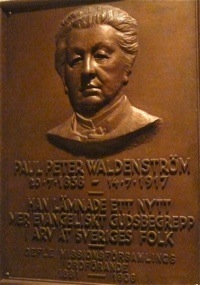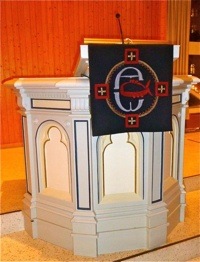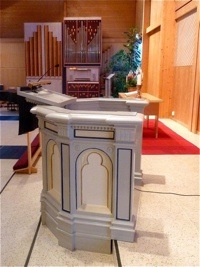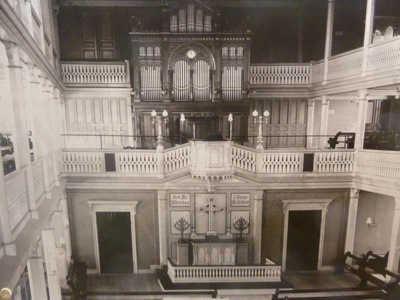The Architecture of a Heritage
Almost all of our “Holiday Lights” travelers to Sweden last December had heard of P.P. Waldenström. And so on our way from Dalarna to Stockholm, it was a special delight to visit Gävle, the town where he lived and served for many years.

As our bus drove into town, we were soon walking on Waldenströmsplan (“Waldenström Square”) to Bethlehem Covenant Church, where Waldenström worshiped and often preached. Two young pastors and a welcoming senior group were waiting for us in the beautifully decorated social hall, where we mingled with the Swedes for coffee, Lucia buns, and an enjoyable program of quartet music and a meditation.


This well-designed church was built in 1986, replacing the original one from 1880. In the tasteful wood sanctuary, we saw the original “Waldenström pulpit,” painted in typical Swedish style. Pastor Per Arne Widman explained the history of the pulpit and Waldenström’s contributions as college teacher, zealous preacher, and influential leader in the läsare (“reader”) movement in Gävle in the 1870s and beyond.

Hanging prominently in the hall outside the sanctuary was a large photograph of the old church, with its imposing high pulpit. Although Waldenström was never pastor of the church, he often preached from that pulpit, proclaiming his pietistic theology of the atonement at a time when the state church and many of its adherents disapproved. Learning more about Waldenström and seeing his pulpit was a moving experience.
On another day, our 24 travelers participated in singing Swedish hymns from the 1800s as we re-enacted a “house church” meeting of the läsare in an old room, replicating a charming early Swedish cottage, in our Dalarna hotel. These two events provided an inspiring link to our pietistic heritage during our 2010 Advent pilgrimage in Sweden.
